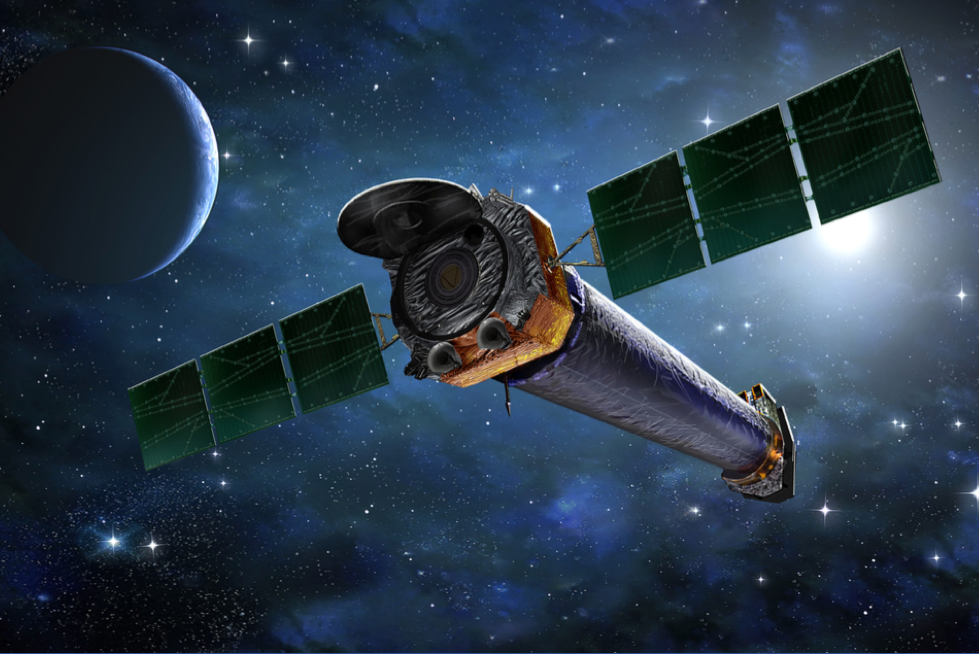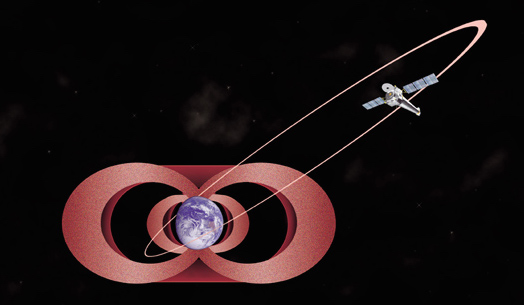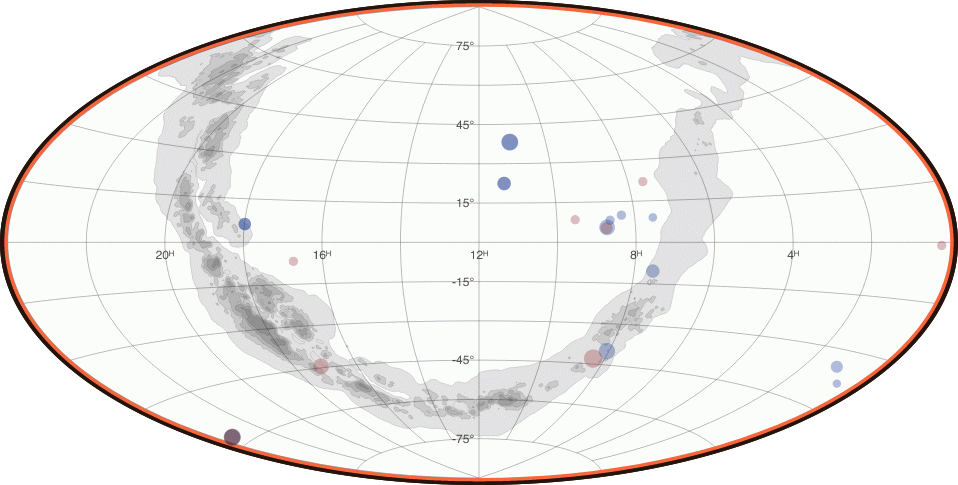Chandra X-ray Observatory
 The Chandra X-ray Observatory was launched on the Space Shuttle Columbia (STS
93) on 23 July 1999, as the third of four observatories in NASA's Great Observatory
series. With the highest precision X-ray mirrors ever built, Chandra produces images with a resolution comparable to that of ground-based optical observatories,
allowing scientists to reveal details about the sites of high energy emission from celestial objects as diverse as planets and black holes. In its very first science
image, of the young supernova remnant Cas A, Chandra revealed a compact neutron star different from any previously
observed. Revealing new classes of objects and
unrivaled details on the high energy process in objects across the Universe have continued ever since.
The Chandra X-ray Observatory was launched on the Space Shuttle Columbia (STS
93) on 23 July 1999, as the third of four observatories in NASA's Great Observatory
series. With the highest precision X-ray mirrors ever built, Chandra produces images with a resolution comparable to that of ground-based optical observatories,
allowing scientists to reveal details about the sites of high energy emission from celestial objects as diverse as planets and black holes. In its very first science
image, of the young supernova remnant Cas A, Chandra revealed a compact neutron star different from any previously
observed. Revealing new classes of objects and
unrivaled details on the high energy process in objects across the Universe have continued ever since.
The Chandra project is managed by NASA's Marshall Space Flight Center, in coordination with the Astrophysics Division of NASA's Science Mission Directorate. In my role as Director of the Chandra X-ray Center I work with an exceptional team of scientists, engineers, and technical and administrative specialists to maximize the scientific return of the Chandra X-ray Observatory, and advise the research community and NASA on matters concerning the application of X-ray astronomy to the solution of significant astrophysical questions.

Chandra observes targets from nearby comets to high-redshift quasars. The observatory is equipped with X-ray cameras and spectrometers to provide both X-ray images and
spectra of celestial objects. The ACIS detector provides both imaging and low-resolution spectra, while the HRC detector provides the highest spatial resolution
imaging available with Chandra. Gratings spectrometers can be inserted into the X-ray beam to provide high-resolution spectra in both low-energy and high-energy
portions of the spectrum.
X-ray images are reconstructed and registered on the sky through the use of an optical aspect camera. Solar panels can be rotated to allow observation of any part
of the sky outside the Sun exclusion zone (roughly 45 degrees around the Sun). Uninterrupted exposure times are limited by solar heating of spacecraft components at
different solar pitch angles. Tools are available to observers to determine the visibility of targets throughout the year.

Chandra is in a highly-elliptical orbit with a period of roughly 64 hours. At apogee, its distance is approximately one-third of that to the Moon, while approaches
to perigee bring the observatory inside the Earth's radiation zones. Due to the large apogee, the Chandra orbit results in considerably reduced Earth-block relative to
observatories in low Earth orbit, thus increasing the overall observing efficiency.
Chandra observations are possible only outside the radiation zones, providing a practical limit on both uninterrupted observation lengths and on simultaneous
observations with other observatories, although Chandra routinely carries out a large number of coordinated observations with both space-based and ground-based telescopes.
 The scheduling of approved Chandra targets is carried out in a two-step process. A long-term schedule of observations is created by allocating targets to weekly
observing bins based on both science observing constraints (such as orbital phase constraints or target monitoring constraints) and on complex thermal constraints. The
latter require a careful selection of targets whose sky positions will allow the management of temperatures on different instruments and spacecraft components, while
also helping to balance the contributions of solar radiation torques to the spacecraft momentum.
The scheduling of approved Chandra targets is carried out in a two-step process. A long-term schedule of observations is created by allocating targets to weekly
observing bins based on both science observing constraints (such as orbital phase constraints or target monitoring constraints) and on complex thermal constraints. The
latter require a careful selection of targets whose sky positions will allow the management of temperatures on different instruments and spacecraft components, while
also helping to balance the contributions of solar radiation torques to the spacecraft momentum.
Each week, targets from the associated long-term schedule bin are arranged in a time sequence whose order ensures proper management of all spacecraft constraints, and
which includes the planning of all maneuvers, star acquisitions, command uploads and data telemetry, and other spacecraft activities. Detailed schedules are posted to
the community. In the event of requests for Targets of Opportunity, wherein rapid observations of recently-identified transient phenomena are requested,
the planning team quickly assesses observing scenarios and works to quickly revise the program to accommodate new observations.
 The Chandra X-ray Observatory was launched on the Space Shuttle Columbia (STS
93) on 23 July 1999, as the third of four observatories in NASA's Great Observatory
series. With the highest precision X-ray mirrors ever built, Chandra produces images with a resolution comparable to that of ground-based optical observatories,
allowing scientists to reveal details about the sites of high energy emission from celestial objects as diverse as planets and black holes. In its very first science
image, of the young supernova remnant Cas A, Chandra revealed a compact neutron star different from any previously
observed. Revealing new classes of objects and
unrivaled details on the high energy process in objects across the Universe have continued ever since.
The Chandra X-ray Observatory was launched on the Space Shuttle Columbia (STS
93) on 23 July 1999, as the third of four observatories in NASA's Great Observatory
series. With the highest precision X-ray mirrors ever built, Chandra produces images with a resolution comparable to that of ground-based optical observatories,
allowing scientists to reveal details about the sites of high energy emission from celestial objects as diverse as planets and black holes. In its very first science
image, of the young supernova remnant Cas A, Chandra revealed a compact neutron star different from any previously
observed. Revealing new classes of objects and
unrivaled details on the high energy process in objects across the Universe have continued ever since.


